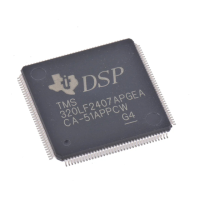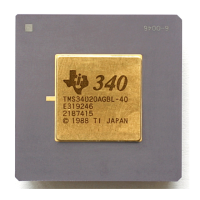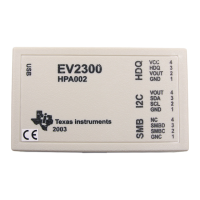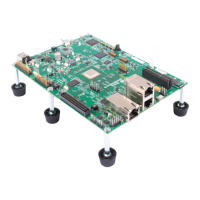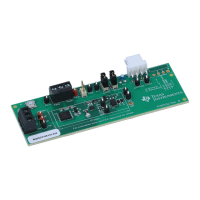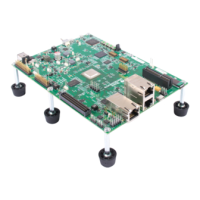Instrumentation APIs
Instrumentation 3-19
The LOG and STS APIs are also used internally by DSP/BIOS to collect
information about program execution. These internal calls in DSP/BIOS
routines provide implicit instrumentation support. As a result, even
applications that do not contain any explicit calls to the DSP/BIOS
instrumentation APIs can be monitored and analyzed using the DSP/BIOS
Analysis Tools. For example, the execution of a software interrupt is recorded
in a LOG object called LOG_system.
In addition, worst-case ready-to-completion times for software interrupts and
overall CPU load are accumulated in STS objects. See section 3.5.4.2,
Control of Implicit Instrumentation, page 3-27, for more information about
what implicit instrumentation can be collected.
3.5.2 Event Log Manager (LOG Module)
This module manages LOG objects, which capture events in real time while
the target program executes.
User-defined logs contain any information your program stores in them using
the LOG_event and LOG_printf operations. You can view messages in these
logs in real time with the CCSv4 Printf Logs RTA tool. To access this tool,
choose Tools > RTA > Printf Logs from the CCStudio menu bar.
A log can be either fixed or circular. This distinction is important in
applications that enable and disable logging programmatically (using the
TRC module operations as described in section 3.4.4, Trace Manager (TRC
Module), page 3-13).
❏ Fixed. The log stores the first messages it receives and stops accepting
messages when its message buffer is full. As a result, a fixed log stores
the first events that occur since the log was enabled.
❏ Circular. The log automatically overwrites earlier messages when its
buffer is full. As a result, a circular log stores the last events that occur.
You configure LOG objects statically and assign properties such as the length
and location of the message buffer.
You specify the length of each message buffer in words. Individual messages
use four words of storage in the log’s buffer. The first word holds a sequence
number. The remaining three words of the message structure hold event-
dependent codes and data values supplied as parameters to operations such
as LOG_event, which appends new events to a LOG object.
As shown in Figure 3-1, LOG buffers are read from the target and stored in a
much larger buffer on the host. Records are marked empty as they are copied
up to the host.
